New Year, New You? Pro Tips for (Safely) Starting a New Exercise Routine

SIGN UP FOR YOUR FREE DAY PASS TODAY!
January is the month of fresh starts, setting resolutions, and evolving into a better version of oneself with the "new year, new you" mindset.
It's a time when gym memberships soar, and home exercise gear, which may have turned into an expensive clothes hanger in recent months (no judgment), gets a new lease on life.
But to avoid getting hamstrung by an injured hamstring, it’s important not to do too much, too fast, when starting a new exercise routine, says Chris Barucci, a physical therapist at Boston University’s Ryan Center for Sports Medicine and Rehabilitation.
“I think a common issue is when people are overzealous when starting a new fitness routine,” Barucci says.
“Oftentimes, the issues involve doing too much too soon and not allowing their body to adapt to the new stresses being applied, resulting in pain or injuries.”
The other big mistake is “more of a mindset-related issue,” he says: not being patient enough to allow for adequate rest between exercise days.
Just as important as training days, rest and recovery periods allow stressed muscles time to repair, rebuild, and strengthen between workouts.
These elements of recovery include sufficient, high-quality sleep, good nutrition, and appropriate hydration.
“We use exercise as a form of ‘good stress’ to the body,” Barucci says.
“We need to dose this stress appropriately and ensure progress happens at rates that are appropriate for each specific individual.
If not dosed appropriately, people can either experience plateaus (which means that exercises were not sufficiently progressive), or people can develop injuries (which often happens if they progressed too rapidly).”
Barucci recommends working with a professional, such as a physical therapist, athletic trainer, personal trainer, or strength and conditioning coach, before embarking on a substantial new exercise routine, so that each person’s individual health factors—as well as their personal goals—can be taken into consideration.
_______________________________________________________________________________________
🔍 Read More: Ready to elevate your fitness journey? Dive deeper with our BMI Calculator, BMR Calculator, TDEE Calculator, and Body Fat Calculator. Uncover the science behind your health!
_______________________________________________________________________________________
In general, though, he has a few tips for any new weekend warrior:
Find things you enjoy, and slowly add volume or intensity.
“For example, if you enjoy walking, you can easily increase your time, speed, and possibly incline as variables over time,” Barucci says.
“If you enjoy weight training, variables such as amount of weight moved, number of repetitions performed, and number of sets of the exercises performed are easily manipulated.”
Building upon something you already enjoy also means you’re more likely to stick with it—beyond January.
Write down or otherwise track your workouts.
“I am a strong believer in writing down and keeping track of what people do, in order to monitor progress (and sometimes regress, for reasons such as injuries, illnesses, personal reasons, etc.),” Barucci says.
Keeping tabs on your exercise also helps keep you consistent, and can be a great resource for managing the volume and intensity of workouts over time.
Train your strength.
“Strength, or the ability to produce force, is the foundation for so many of the activities we all want and need to do,” Barucci says.
“It is relatively easier, takes less total effort, and is relatively less risky, for a person with a greater baseline level of strength to do almost any activity compared to a person with a lower baseline level of strength.”
From Barucci’s vantage point as a physical therapist, he says that, often, people lack baseline levels of strength and flexibility—a natural result of sedentary lifestyles or jobs.
He recommends incorporating strength and flexibility programs to help address these issues.
But when it comes to weight lifting, seek out professional guidance on your form.
“Weight lifting really involves a significant number of technical factors, and novice lifters often do not understand this,” Barucci says.
“Quality coaching cues are critical to ensure proper execution of these movements, particularly those that involve relatively higher loads and involve greater levels of coordination.”
So, if there’s a fitness goal among your 2024 resolutions, resolve to ease in safely, too.
Source: bu
The opinions shared in the GymNation blog articles are solely those of the respective authors and may not represent the perspectives of GymNation or any member of the GymNation team.














